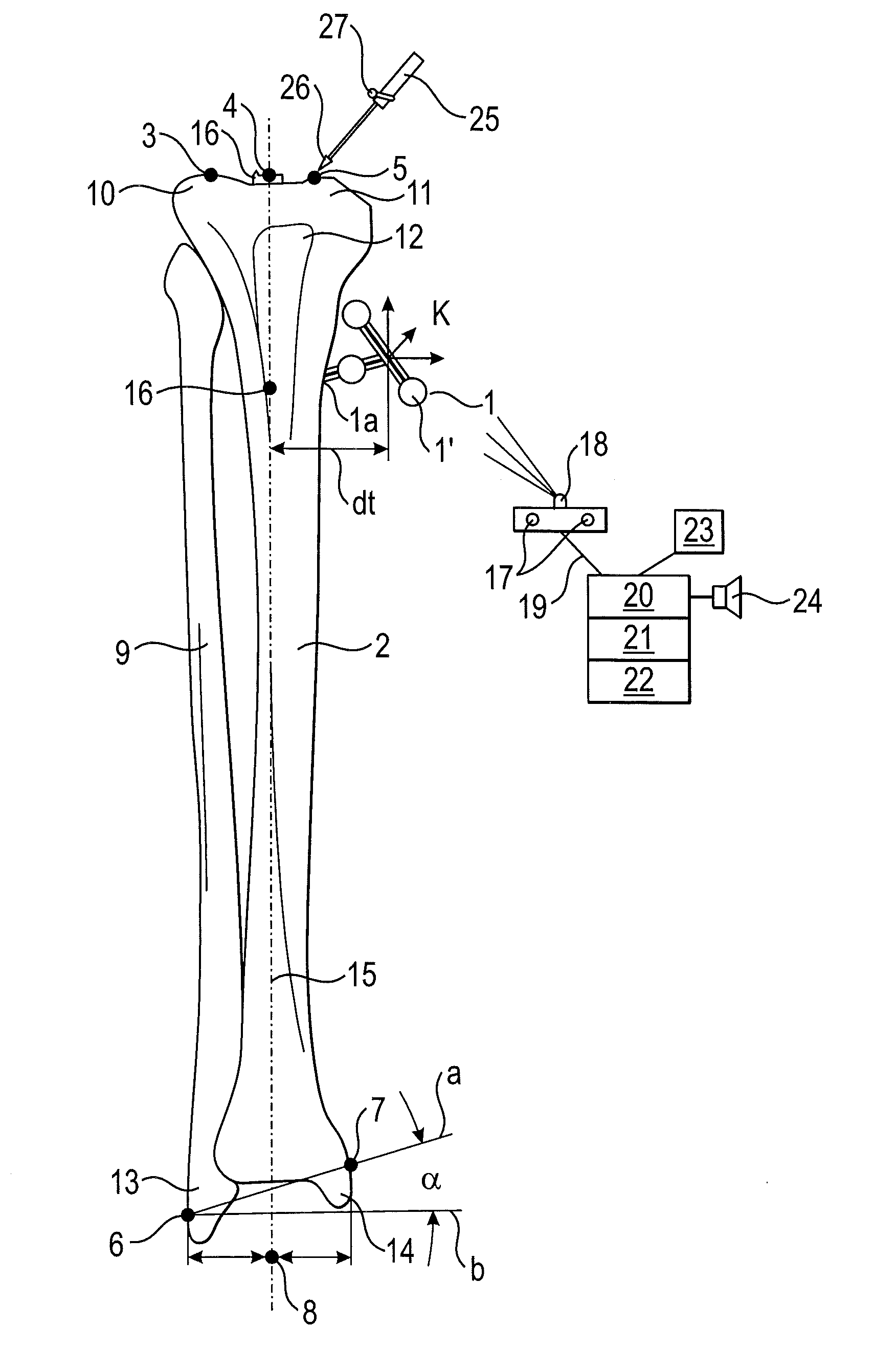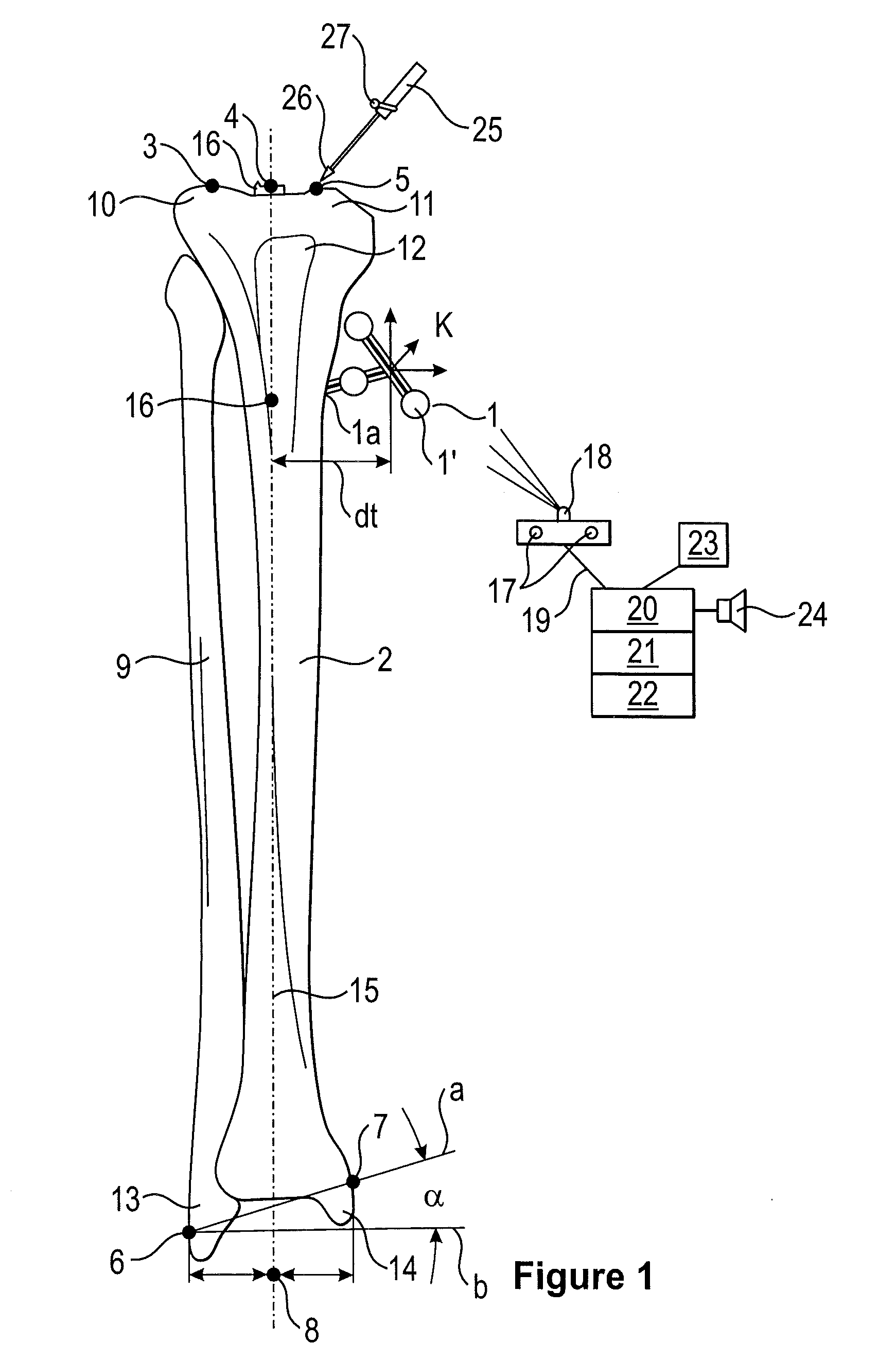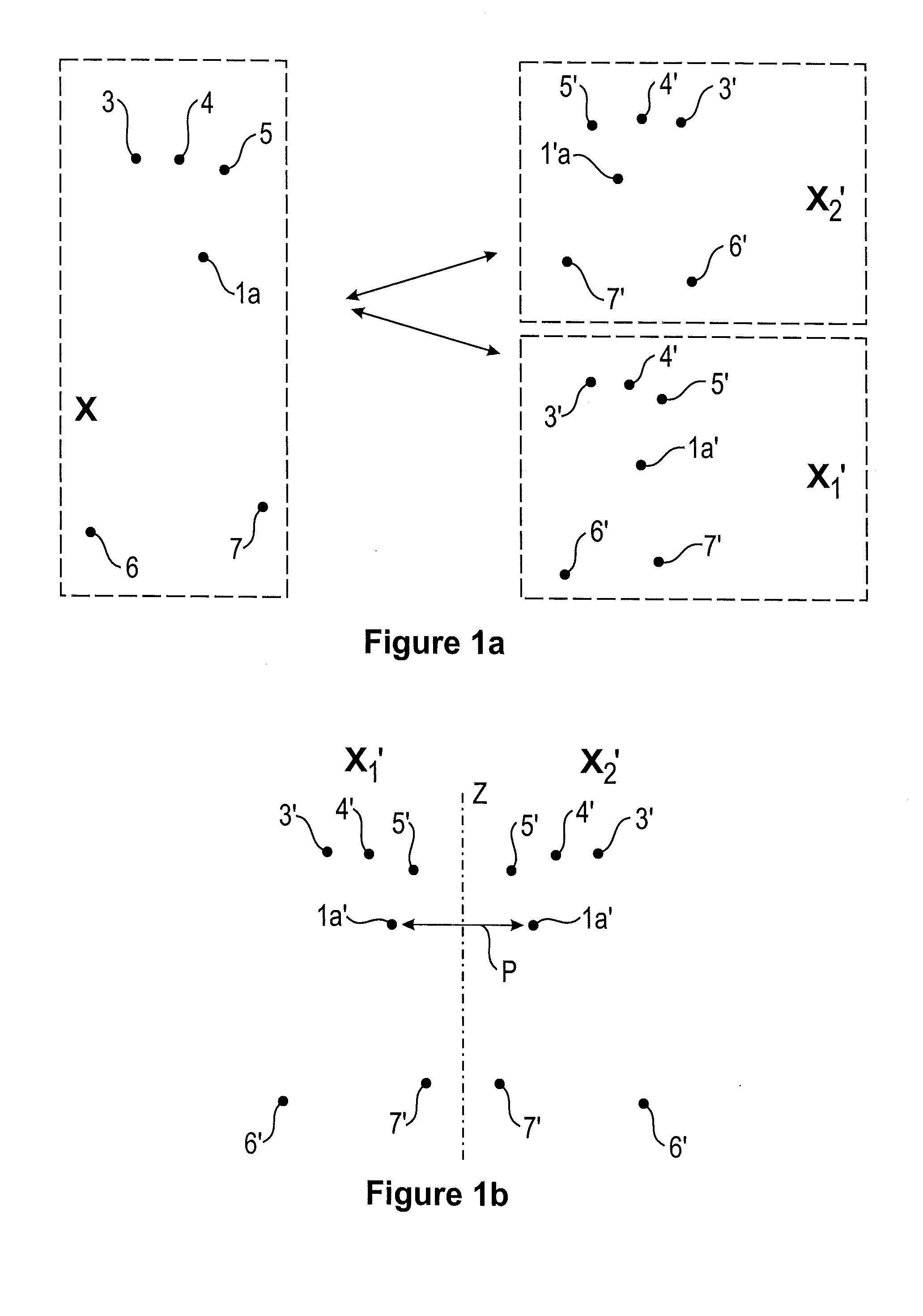Express-registering regions of the body
a technology of express registration and body, applied in the field of determining the region of the body, can solve the problems of time-consuming and laborious input, and parts of the patient's body cannot be clearly integrated into the model data s
- Summary
- Abstract
- Description
- Claims
- Application Information
AI Technical Summary
Benefits of technology
Problems solved by technology
Method used
Image
Examples
Embodiment Construction
[0052]The reference sign X is used in the following as an abbreviation for the set of reference signs 1a, 3, 4, 5, 6, 7. The reference sign Y is used in the following as an abbreviation for the set of reference signs 17, 18, 20, 21, 22, 23.
[0053]FIG. 1 shows the position of the patient landmarks X on a tibia and a fibula, and the tibial axis (longitudinal axis) being ascertained with the aid of a surgical navigation system. A reference star 1 is attached on a tibia 2 in the reference point 1a in the region of the tubercle 12 of the tibia. It is also possible to dispense with the reference star 1 if the reference point 1a is registered and / or established with the aid of a pointer 25 at the beginning of the method or if at least one patient landmark X does not lie in a common plane with the other patient landmarks X. Registering comprises assigning the reference point 1a in the patient data set to the corresponding co-ordinates in the model data set. The surgeon can tap the patient la...
PUM
 Login to View More
Login to View More Abstract
Description
Claims
Application Information
 Login to View More
Login to View More - R&D
- Intellectual Property
- Life Sciences
- Materials
- Tech Scout
- Unparalleled Data Quality
- Higher Quality Content
- 60% Fewer Hallucinations
Browse by: Latest US Patents, China's latest patents, Technical Efficacy Thesaurus, Application Domain, Technology Topic, Popular Technical Reports.
© 2025 PatSnap. All rights reserved.Legal|Privacy policy|Modern Slavery Act Transparency Statement|Sitemap|About US| Contact US: help@patsnap.com



